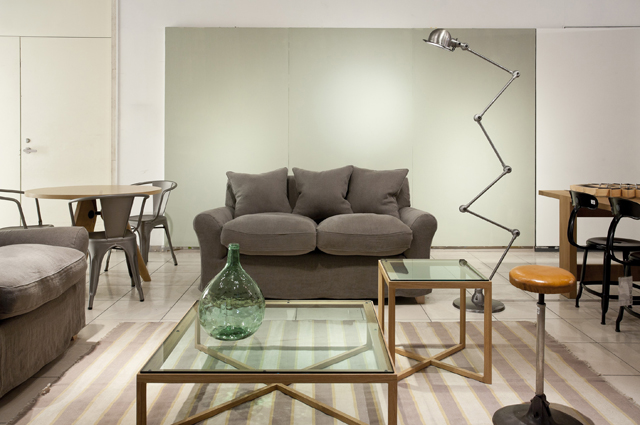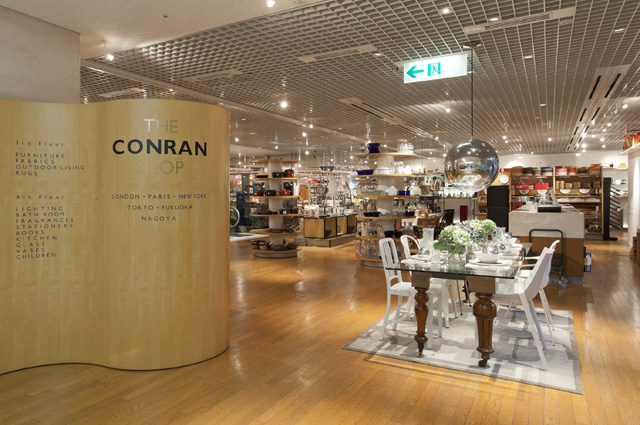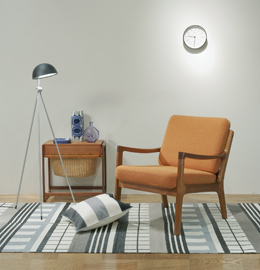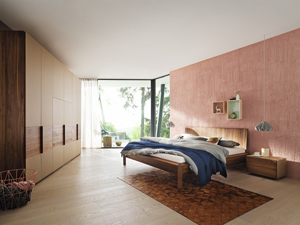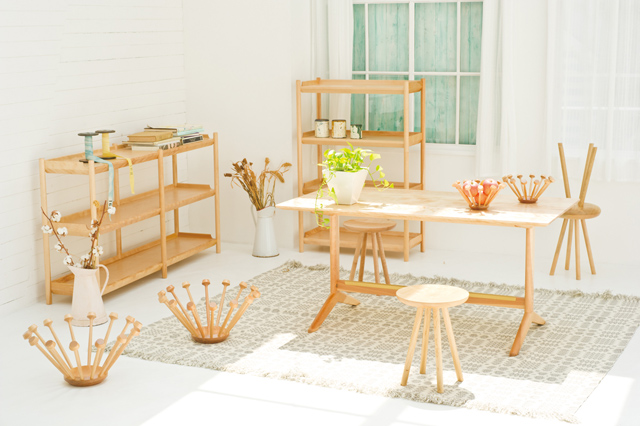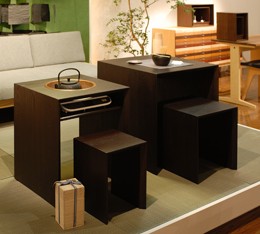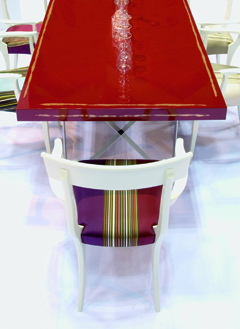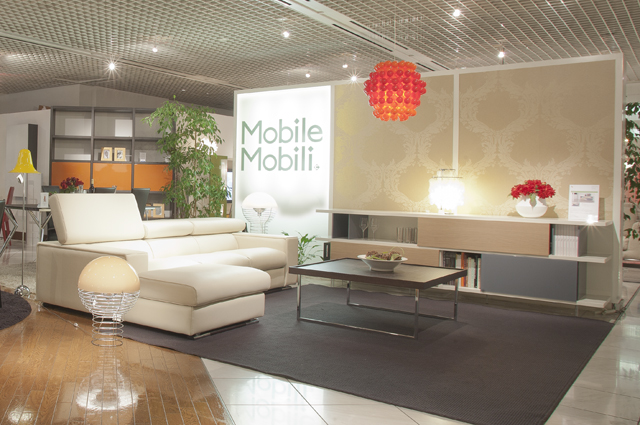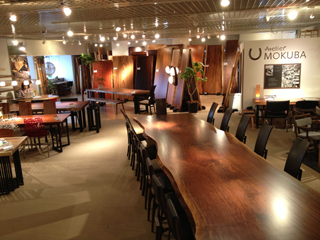When I look around my home, I see a space filled with a few basic necessities, a couple of investment pieces, and some personal paraphernalia giving it that lived-in feel. I’d love it to be a little more cohesive… a touch more stylish. But the problem is where to start, or how to bring it all together. After hearing about the Living Design Center OZONE in Shinjuku, I was curious to see what it could do for me and my interior-design conundrum.
Established 20 years ago, this home interior retail complex is located in the Shinjuku Park Tower building, which is also home to the Park Hyatt Tokyo Hotel. It is big enough to get lost in, wandering around the 30 showrooms and shops, spread over five floors. You could spend a couple of hours alone in The Conran Shop. Yet the overall feeling is one of being greeted by a calm, organized, and visually very appealing space. Staff is on hand to help you find the right products and offer advice on how to incorporate them into your home, so there’s no need to feel overwhelmed.
As I walked from floor to floor, I noticed how, even though each showroom features products that all have their own identity, there is a common thread of sophistication accented by originality. You can choose how far to head towards either end of the design spectrum, choosing to go for a more classic look or something a little more edgy and quirky—or a combination of both, which is pretty much what the store has managed to do itself. Preferring to be a little more offbeat in my style, I would probably go for their restored vintage pieces, one of the very nouveau-looking chandeliers that seem to be wrapped in a kind of plastic spiderweb, and perhaps the dining room bench that features a paint-dipping effect, one half being blue and the other natural wood.
The thing about OZONE is that it’s all about the experience: they present products in a way that reflects how we live. So you might find a living room setting featuring a variety of brands pulled together to provide a home décor ‘solution’, if you will.
I also visited a couple of their lifestyle-themed events, which are short-term product exhibitions. Offered year-round, these events bring fresh trends into the mix and also show you how to incorporate them into your home.
By the time I headed for the exit, I had earmarked at least a dozen pieces for my must-have list. One item I particularly fell in love with was a Japanese tea ceremony set, complete with table and chair, which I was told is not commonly found in homes these days. Now just to decide where to put it…
The Conran Shop – 3–4th floors
With three generations of architects and one interior designer in my family, I’m no stranger to the impact British designer Terence Conran has had on lifestyle and décor. However, I’d never actually been to a Conran Shop before, so I welcomed the chance to visit the branch at OZONE.
Back in the Swinging Sixties, the designer was part of the Pop Art scene, and he and his fellow creatives were tired of not having a wide choice of furniture at their fingertips. He believed innovative, quality design should be available to everyone, so he decided to set up shop, curating a mix of expertly crafted and more casual accessories, all at accessible prices. His philosophy? A little something he likes to call a “style of life.”
He founded The Conran Shop in 1973 in London and it has since grown to be one of the leading lifestyle retailers in the world with stores in Paris, New York and Tokyo. Browsing the store, there were certain pieces that stood out, like the grey sofa designed by the owner himself many years ago. Although the design is still his original, today you can choose to upholster it in over 300 different colors and materials.
All pieces are hand-picked by a merchandiser in the UK, and the focus is on functionality combined with design: in other words, not just showing off good design, but demonstrating how to feature it in your home. Around every corner of the store you’ll find a home display, offering very specific presentation tips for those in need of inspiration. There are also regular special events that feature selected products for a limited time period in a space that serves as a “shop within a shop.” The shop items change every two weeks, so each time you visit you can see something new.
Thinking of my own home and how I’d like it to have a cosmopolitan air, the store seems like a place where I could collect items from around the world. In fact, when it first opened in Japan 20 years ago, The Conran Shop sparked major interest from the public who were used to mainly Japanese-style furniture. As a result, it has played a hand in the growing popularity of European-style furniture in Japan.
Luckily there’s no need to worry too much about trying to fit the furniture into my small Japanese apartment, as The Conran Shop is all too aware of the needs of modern lifestyles, saying it requires “well thought-out, high quality and beautiful pieces of furniture that allow you to live well and fit more of the best into less space.” His own advice for decorating a small space is to “choose furniture that is flexible, adaptable and multi-purpose.”
Perhaps I need to rethink that Japanese tea ceremony set.
Nordic Form – 5th Floor
If you’re the type who watches Mad Men and covets the furniture featured, head straight for Nordic Form. As the name implies, the different brands on show here are all from Denmark, Sweden and surrounding areas. A part of the furniture is rare vintage from the 50s and 60s that’s been restored to bring it into the present tense, and the collection covers all aspects of the living area including lighting. The products are mostly made of wood, which, together with the fabrics and design style, makes them popular in Japanese culture—in fact, the showroom is featuring one of the top selling chairs in Japan. Be sure to check out the colorful mat made from plastic, which is bound to be a talking point in your home if nothing else. Nordic Form will be hosting an event from October 10 to December 24, featuring about 200 pieces of vintage furniture from the 50s and 60s, the golden era of Nordic design.
Team 7/Bedfitter – 6th floor
A space shared by Team 7, an Austrian furniture maker that designs beds as well as items for other areas of the home like the kitchen and dining room, and bedfitter, a Japanese bed brand that also offers accessories in the way of mattresses and linen. Never before has a bed looked so inviting as the Team 7 bed that’s set up in the main display area. It’s made for two but consists of two separate mattresses as they each have an adjustable, head-lifting feature that means reading in bed no longer requires a mountain of pillows. The mattress is made from sheep and horsehair so it’s all-natural, and allows for optimum temperature and humidity control. Then, while your mattress is accommodating your changes in temperature and individual reading needs, the bed base supports your body and sleeping position with its wooden spring system and adjustable function while allows you to make it either firmer or softer. Dreams don’t come sweeter than this.
Daniel – 4th floor
Over the last 150 years, this Yokohama-based handmade furniture manufacturer has built a reputation for offering the finest craftsmanship in very traditional, solid wood designs that could be described as the comfort food of furniture. It’s not going to challenge your senses; rather, this store provides a feeling of familiarity and belonging. This makes it all the more interesting that Daniel has just launched a new, more modern collection called Camome, which seeks to meet the style demands of the present age. It’s brighter, lighter and, like all the furniture made by Daniel, is built to last a century (literally). The aim was to take the tried and test techniques, so as not to sacrifice on quality, and collaborate with an outside designer to create something more contemporary and casual. You can see evidence of this in items like the Muku Table with its clean-cut wood, sleek lines and simple brass plate constructed between the legs.
Nippon Form – 4th floor
For your tatami mats and all other things Japanese. Think compact sofas, tables close to the floor, modern ceramic chopstick holders and room presentations that demonstrate how to make even the smallest space a functional tea-sharing area. The showroom displays and can recommend items that match current lifestyles in Japan, so the different designers featured here are chosen according to this criteria as opposed to how well-known they are. While in the past, Japanese home interiors would’ve been very traditional, these days there is an increasing influence from the West, which means, for example, more sofas and less sitting on the floor. Nippon Form hosts mini events every two months so every time you visit the showroom you’re pretty much guaranteed a different experience. One of the more unique items currently on display is a range by Jaime Hayon, a Spanish designer living in Kutani Choemon who has put a subtle Spanish twist on his Japanese products.
Rockstone – 5th floor
Perhaps one of the most remarkable pieces here is a dining table with a finish in traditional urushi. This type of lacquer has been popular in Japan for a few hundred years but is usually only used on smaller items such as miso soup bowls. The style of ROCKSTONE designer Eiri Iwakura, who first opened shop in 1981, is to take classic techniques like urushi and use them in his furniture design. The result of this unusual combination is a dining table that is at once ultra modern and ultra traditional. The same goes for the majority of items here, with a mix of old and new being the main theme. They feel more like works of art, which most probably also has something to do with the manufacturing process—instead of making the entire piece himself, Iwakura starts off with a vision and then calls on different specialists, for example woodworking or metal experts, to come together and collaborate. It may take longer to create, but the end result is worth it.
Mobile Mobili – 5th floor
This showroom features eight different furniture brands all from northern Italy. Each manufacturer has its own characteristics but they are all united by a modern design sensibility that is very specific to their shared origin. The materials used are also very distinct, with leather being one of the most popular fabrics. Every spring, the showroom manager visits a furniture expo in Italy, where new pieces and manufacturers are sourced, with the aim of introducing new Italian ranges to Japan, while paying attention to the functional needs of people living in small spaces. You’ll feel right at home here if you’re the kind of person who enjoys shiny surfaces, no clutter, a monochromatic color code and a strong espresso for breakfast.
Atelier Mokuba – 5th floor
Something feels very satisfying about seeing a piece of wooden furniture that still looks like it was part of nature. It somehow feels more authentic, more earthy. Interestingly, this style is becoming more and more popular in modern homes as cold, hard lines make way for rough edges, giving the furniture and home a more natural yet artistic feel. At Atelier MOKUBA, the focus is on fashioning a long piece of rough-cut wood into a tabletop and bench to go with it. You can choose your cut, size and texture, which also means you can customize the wood for use as something other than a table. There are no two pieces alike and with this particular line only being three years old, there’s a good chance it’ll be a truly unique piece in your home.
For more information about Living Design Center OZONE, please visit their site at http://www.ozone.co.jp/eng/index2.html

